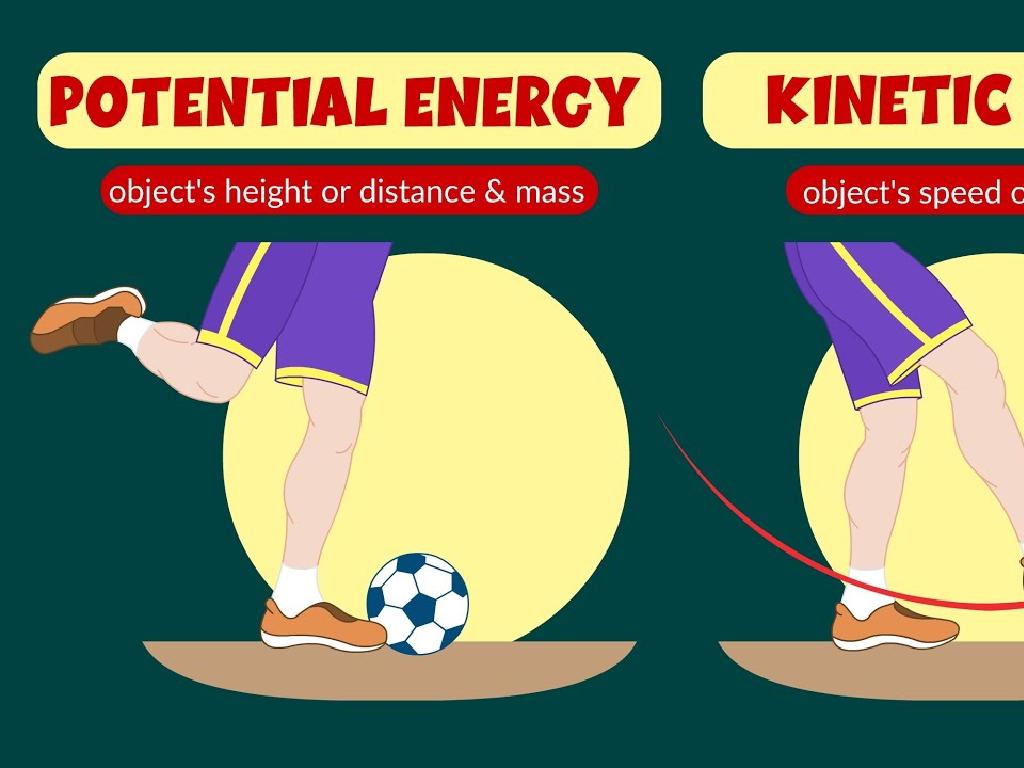Use Words As Clues To The Meanings Of Greek And Latin Roots
Subject: Language arts
Grade: Eighth grade
Topic: Greek And Latin Roots
Please LOG IN to download the presentation. Access is available to registered users only.
View More Content
Unlocking Vocabulary with Greek and Latin Roots
– Discover word building blocks
– Roots are the basic parts of words.
– Greek & Latin roots in English
– Many English words are derived from ancient Greek and Latin.
– Master roots to boost vocabulary
– Knowing roots helps deduce meanings of unfamiliar words.
– Significance of learning roots
– Understanding roots enhances comprehension and vocabulary skills.
|
This slide introduces students to the concept that many English words are built from Greek and Latin roots. By understanding these roots, students can begin to decode unfamiliar words and expand their vocabulary. Emphasize that a strong foundation in these roots can significantly improve their language arts skills, including reading comprehension and word usage. Provide examples of common roots and challenge students to identify them in words they encounter in their reading or daily life. Encourage them to become word detectives, looking for clues in the roots to unlock meanings.
Unlocking Word Meanings: Greek and Latin Roots
– Define root words
– The base part of a word without prefix/suffix
– Roots vs. prefixes and suffixes
– Prefix: beginning part, Suffix: ending part of words
– Explore common Greek roots
– ‘bio’ means life, ‘geo’ means earth
– Explore common Latin roots
– ‘port’ means carry, ‘scrib’ means write
|
This slide introduces the concept of root words, which are the fundamental parts of words from which other words grow, usually through the addition of prefixes and suffixes. Understanding the difference between roots, prefixes, and suffixes is crucial for students to dissect and comprehend complex vocabulary. Provide examples of common Greek and Latin roots, such as ‘bio’ (life) and ‘geo’ (earth) from Greek, and ‘port’ (carry) and ‘scrib’ (write) from Latin. Encourage students to think of words they know that contain these roots. This understanding will help them deduce the meanings of new words they encounter in their reading.
Exploring Greek Roots: ‘bio’ and ‘geo’
– ‘bio’ means life
– Example: ‘biology’, the study of life
– ‘geo’ means earth
– Example: ‘geography’, the study of earth’s surface
– Discover words with ‘bio’
– Find words with ‘geo’
|
This slide introduces students to the concept of Greek roots in English vocabulary, focusing on ‘bio’ and ‘geo’. ‘Bio’ is a root that means ‘life’ and is used in words like ‘biology’, which is the study of living organisms. ‘Geo’ is a root that means ‘earth’ and is found in words like ‘geography’, the study of the Earth’s surface. The activity for the students is to identify more words that contain these roots. For example, ‘biography’ (a life story) or ‘geology’ (the science of the Earth’s physical structure). Encourage students to think about how these roots help them understand the meanings of new words. This activity will help reinforce their understanding of Greek roots and expand their vocabulary.
Exploring Greek and Latin Roots
– ‘spect’ means to look
– Example: ‘inspect’ means to look over carefully
– ‘port’ means to carry
– Example: ‘transport’ means to carry from one place to another
– Discover words with ‘spect’
– Find words using ‘port’
|
This slide introduces students to the concept of Greek and Latin roots, focusing on ‘spect’ and ‘port’. Explain that understanding these roots can help decipher the meanings of unfamiliar words. Provide examples like ‘inspect’ and ‘transport’ to illustrate how the root informs the word’s definition. For the activity, ask students to identify additional words that contain the roots ‘spect’ and ‘port’. Encourage them to use dictionaries or brainstorm in groups. Possible activity variations: 1) Create a word map for each root, 2) Write sentences using new words, 3) Draw pictures representing the words, 4) Have a contest to see who can find the most words.
Using Context Clues with Greek & Latin Roots
– Infer meanings using context
– Use surrounding text to understand unfamiliar words
– Sentences with Greek/Latin roots
– ‘Tele’ (far) in telephone, ‘photo’ (light) in photograph
– Class practice with new words
– Guess meanings of words like ‘telepathy’ or ‘photosynthesis’
– Enhance vocabulary skills
|
This slide aims to teach students how to deduce the meaning of new words by understanding their Greek and Latin roots within the context of a sentence. Begin by explaining that many English words are derived from Greek and Latin roots, and knowing these can help unlock meanings. Provide clear examples where the root is highlighted and show how the meaning of the root contributes to the word’s overall definition. During class practice, encourage students to use context clues from the sentence to guess the meaning of words with Greek and Latin roots. This activity will help students improve their vocabulary and reading comprehension skills.
Word Dissection: Unveiling Roots and Affixes
– Break down complex words
– Divide words into roots, prefixes, and suffixes
– Analyze roots and affixes
– Roots carry core meaning; affixes modify it
– Understand words fully
– Grasp the meaning by examining each component
– Class activity: Dissect words
– Practice with words like ‘unbelievable’ or ‘reconstruction’
|
This slide introduces the concept of word dissection, an effective strategy for understanding the meaning of complex words by breaking them down into their Greek and Latin roots and affixes. Students will learn that roots are the base of the word carrying the core meaning, while prefixes and suffixes are added to modify this meaning. The class activity will involve students selecting words and dissecting them into their constituent parts to better understand the full meaning. Teachers should prepare a list of words with clear root-affix structures and guide students through the dissection process. Possible activities include creating a classroom word wall with dissected words or having students work in groups to dissect and present words to the class.
Greek and Latin Roots: Practice and Application
– Engage in interactive vocabulary exercise
– Use clues to define new words
– Consider the sentence context and root meanings
– Group activity: word creation
– Combine known roots to form new words
– Discuss meanings of new words
– Share and explain your new words with the class
|
This slide outlines an interactive class exercise aimed at reinforcing the understanding of Greek and Latin roots in vocabulary. Begin with a list of new vocabulary words and guide students to use context clues and their knowledge of roots to determine each word’s meaning. For the group activity, students will use the roots they’ve learned to create new words. They will then discuss the possible meanings of these words based on the roots used. This activity encourages collaboration, critical thinking, and application of knowledge. It’s important to facilitate the group discussions and ensure that each student participates. Provide feedback and clarification as needed to help students solidify their understanding of word roots and their ability to decipher word meanings.
Class Activity: Crafting a Root Word Tree
– Construct your Root Word Tree
– Branch out each studied root
– Roots are the base of words; think ‘bio’ for life, ‘geo’ for earth
– Add leaves with derived words
– For ‘bio’, leaves could be ‘biology’, ‘biography’
– Discuss meanings in groups
– Share how each word relates back to the root’s meaning
|
This activity is designed to help students visualize the concept of word roots and how many words are derived from a single root. By creating a ‘Root Word Tree’, students will be able to see the connections between different words and their roots. Encourage creativity in the tree’s design and thoroughness in the selection of words for the leaves. In small groups, students will explain their trees and the words they chose, fostering discussion and deeper understanding of Greek and Latin roots. Possible roots to explore include ‘astr’ for star, ‘therm’ for heat, ‘photo’ for light, and ‘tele’ for distance. This will enhance their vocabulary and comprehension of word origins.
Wrapping Up: Greek and Latin Roots
– Recap: Greek & Latin roots
– Roots enhance comprehension
– Understanding roots helps deduce meanings of new words, enriching vocabulary.
– Homework: Dissect 5 words
– Identify words with Greek or Latin roots from any reading material.
– Write meanings of roots
– Break down each word into root, prefix, suffix; write what each part means.
|
As we conclude today’s lesson, remind students of the key points we’ve covered about Greek and Latin roots. Emphasize how recognizing these roots can significantly aid in understanding the meaning of complex words and thus improve overall vocabulary and reading comprehension. For homework, students should find five new words that contain Greek or Latin roots, dissect the words to identify the root, prefix, and suffix, and write down the meaning of each part. This exercise will reinforce today’s lesson and prepare students for more advanced vocabulary challenges. Encourage them to use a dictionary or online resources to assist in their homework.






